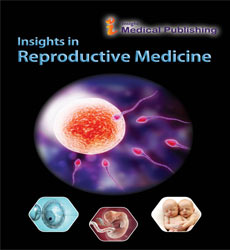Impact of Modern Technologies for Prenatal Development
Kusuma Gavara*
Department of Obstetrics and Gynecology, Institute of Child Health, London, UK
- *Corresponding Author:
- Kusuma Gavara
Department of Obstetrics and Gynecology,
Institute o f Child Health,
London, U K,
E-mail: kusuma@gmail.com
Received Date: November 08, 2021; Accepted Date: November 22, 2021; Published Date: November 29, 2021
Citation: Gavara K (2021) Impact of Modern Technologies for Prenatal Development. Insights Reprod Med Vol.5 No.2.14.
Description
The growth of medical technology in pregnancy and childbirth is a well-established phenomenon. During the twentieth century, the locus of childbirth shifted from women’s own homes to institutional settings managed by professionals, first in the western-industrial countries and especially the US, and then gradually these technologies were diffused elsewhere. In parallel to the vast movement of hospitalisation of birth, obstetrical knowledge, technologies and practices transformed the maternal experience in a radical manner, while at the same time establishing the ‘biomedical’ or the ‘techno-scientific’ management of birth. During recent decades, the medical uptake of pregnancy and childbirth has been accelerated via the generalisation and even the reutilisation of various technologies and pharmaceutical products.
Originally prenatal prognosis was confined to the diagnosis of metabolic disorders and depended on assaying enzyme levels in amniotic fluid. With the improvement of recombinant DNA generation, molecular prognosis has become viable for a few genetic situations overdue in the 1970s. Here we in brief overview the records of molecular prenatal diagnostic checking out, the usage of Duchenne muscular dystrophy as an example, and describe how over the past 30 years we've moved from supplying checking out to three affected individuals the usage of techniques, such as Southern blotting to identify deletions, to greater rapid and correct PCR-based testing which identifies the correct alternate in dystrophin for a more wide variety of families. We talk the ability for safer, in advance prenatal genetic diagnosis using mobileular loose fetal DNA in maternal blood before concluding through speculating on how more latest techniques, such as next era sequencing, may further effect at the ability for molecular prenatal checking out. Progress is not without its challenges, and as cytogenetics and molecular genetics begin to unite into one, we foresee the main challenge will not be in figuring out the genetic alternate, however alternatively in interpreting its significance, particularly in the prenatal setting wherein we frequently have no phenotype on which to base interpretation.
Sex differences in prenatal development
Sex Differences in Prenatal Development because nearly all prenatal development is controlled by maturational sequences that are the same for all members of our species male and female alike there aren’t very many sex differences in prenatal development. Still, there are a few, and they set the stage for some of the physical differences that are evident at later ages. Sometime between 4 and 8 weeks after conception, the male embryo begins to secrete androgens, including the male hormone testosterone from the rudimentary testes. If this hormone is not secreted or is secreted in inadequate amounts, the embryo will be “demasculinized,” even to the extent of developing female genitalia. Female embryos do not appear to secrete any equivalent hormone prenatally. However, the accidental presence of male hormone at the critical time (such as from some drug the mother may take, or from a genetic disorder called congenital adrenal hyperplasia) acts to “defeminize,” or to masculinize, the female fetus, sometimes resulting in male like genitalia and frequently resulting in masculinization of later behaviour, such as more rough-and-tumble play. Several hormones that affect the prenatal development of genitalia also appear to affect the pattern of brain development, resulting in subtle brain differences between males and females and affecting patterns of growth-hormone secretions in adolescence, levels of physical aggression, and the relative dominance of the right and left hemispheres of the brain .Although early research has raised some very intriguing questions, the evidence in this area is still fairly sketchy; it is clear that whatever role such prenatal hormones play in brain architecture and functioning is highly complex. Girls progress a bit faster in some aspects of prenatal development, particularly skeletal development. They are 4 to 6 weeks ahead in bone development at birth. Despite the more rapid development of girls, boys are slightly heavier and longer at birth, with more muscle tissue and fewer fat cells.
Conclusion
The growth of medical technology in pregnancy and childbirth is a well-established phenomenon. During the 20th century, the locus of childbirth shifted from women’s personal houses to institutional settings managed through professionals, first in the western-industrial countries and especially the US, after which progressively those technology have been subtle elsewhere. In parallel to the widespread motion of hospitalisation of birth, obstetrical knowledge, technology and practices transformed the maternal experience in a radical manner, while at the equal time establishing the ‘biomedical’ or the ‘techno-scientific’ control of birth. During latest decades, the medical uptake of pregnancy and childbirth has been accelerated through the generalisation and even the routinisation of diverse technology and pharmaceutical products.
Open Access Journals
- Aquaculture & Veterinary Science
- Chemistry & Chemical Sciences
- Clinical Sciences
- Engineering
- General Science
- Genetics & Molecular Biology
- Health Care & Nursing
- Immunology & Microbiology
- Materials Science
- Mathematics & Physics
- Medical Sciences
- Neurology & Psychiatry
- Oncology & Cancer Science
- Pharmaceutical Sciences
